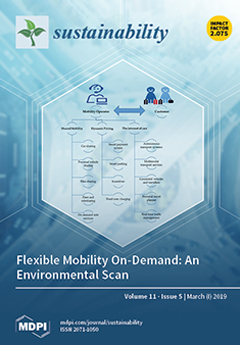In this study, various national strategies and programs are described by planning instruments. The TIEB (Thailand Integrated Energy Blueprint), which includes six programs (AEDP, PDP, EEDP, ODP, GDP, REDP), aims to regulate renewable energy and improve the use of biofuel. In addition, the
[...] Read more.
In this study, various national strategies and programs are described by planning instruments. The TIEB (Thailand Integrated Energy Blueprint), which includes six programs (AEDP, PDP, EEDP, ODP, GDP, REDP), aims to regulate renewable energy and improve the use of biofuel. In addition, the potential of second-generation biofuels is estimated with different residue extractions of second-generation biomasses: 20% (scenario 1), 44% (scenario 2), and 66% (scenario 3). Based on the production potentials that were estimated, CO
2 will decrease 1.3–3.5 megatons in the gasoline sector, and 1.4–3.8 megatons in the diesel sector under scenario 1. In scenario 2, we estimated decreases of 2.8–7.7 mega tons and 3.2–8.4 mega tons of CO
2 for the gasoline and diesel sectors, respectively. Finally, scenario 3 is expected to reduce the CO
2 concentration by 4.2–11.6 megatons in the gasoline sector, and by 4.7–12.6 megatons in the diesel sector. We also estimate the economic potential of a second-generation biofuel with the view of emissions trading. For bioethanol and biodiesel, respectively, 27–74 million USD and 30–81 million USD could be realized in scenario 1, 60–163 million USD and 67–178 million USD in scenario 2, and 90–244 million USD and 100–267 million USD in scenario 3. We conclude that the future potential of second-generation biofuels in Thailand is optimistic, and that they can provide both environmental and economic benefits to the country.
Full article





